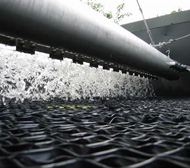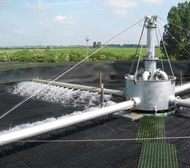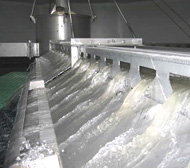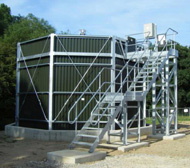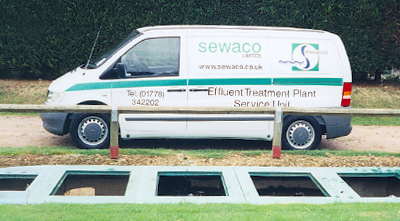Dos and don'ts for STP
How to keep your sewage treatment plant running sweetly.
Sewage treatments plants use colonies of live natural micro-organisms to break down pollution in domestic sewage. Many chemicals found in the households can inhibit or kill these micro-organisms, particularly if excessive amounts are used.
Bear in mind that treatment plants serving a few houses do not have the benefit of dilution that occurs at a large sewage works. A bottle of bleach tipped down the toilet in Birmingham would be virtually lost amongst the millions of gallons of sewage arriving at city's treatment works; a bottle of bleach in a plant servicing half a dozen houses could be a lethal dose.
If the micro-organisms are damaged, they will usually recover in time. But in the meanwhile, one of the more obvious symptoms is an unpleasant smell, so it is in residents interest to avoid this.
Generally speaking, all common household cleaning fluids are acceptable, provided they are used in accordance with the makers instructions and stipulated concentrations.
The following are some of the most common chemicals found in household solutions. It is not an exhaustive list and the golden rule is: "if in doubt – leave it out".
Bear in mind too that it isn't only the toilet that is connected to the treatment plant, anything that goes down the sink, bath etc., also ends up there.
Washing machine and dishwasher detergents, washing up liquids:
Perfectly all right in normal concentrations and usage. Problems can occur if, for instance, you are washing the jerseys of the local rugby club's five teams! Excess amounts of biological detergent can affect the biomass development.
BioDisc incorporates a unique flow management system which enhances its ability to handle shock loads of detergent waste, but there are limits even to this, so if you have to do unusual amounts of clothes washing it would be good idea to spread it over a few days.
Floor cleaners, disinfectants and bleaches:
These are safe to use in accordance with the makers recommendations and in the minimum necessary concentration. Do not pour neat disinfectant or bleach down the sink or outside gullies. If these are smelly it usually indicates a build up of decaying material or a plumbing problem and should be dealt with accordingly.
Nappy disinfectants and bottle Sterilising fluids eg. Milton:
When disposing of the used fluid, ensure that it is well diluted with water. The easiest way of doing this is usually to flush it away down the toilet.
Waste disposal units:
These do not inhibit the micro-organisms, but, depending on use, they can present the treatment plant with considerable extra biological load. Much better to compost your vegetable peelings etc. – it's cheaper and environmental friendly.
Home beer and wine making:
This presents a similar problem to waste disposal units. The treatment plant has to work as hard to treat one pint of beer tipped down the drain as it does to treat all the normal waste produced by one person in 24 hours. See also note above regarding Sterilising fluids.
THE FOLLOWING MUST NOT BE DISCHARGED INTO THE DRAINS:
- Motor oil, grease, anti-freeze, brake fluid etc.
- Cooking oil and fat.
- Weed-killers, insecticides, fungicides and other gardening chemicals.
- Paint, thinners, white spirit, turpentine, creosote etc.
Medicines
Take unused medicines to a pharmacist for safe disposal.
Photographic developing fluids
Nappies, sanitary towels, rags, soft toys, tennis balls etc.
It may seem a bit obvious to say this, but it is amazing what gets flushed down the loo from time to time. Although such items are not directly damaging to the micro-organisms they can cause problems, not the least of which is simple blockage of the drain. Even so-called disposable nappies and sanitary towels often do not degrade fully in the treatment plant, and can lead to malfunction, so it is best to dispose of them by other means. Related Downloads


